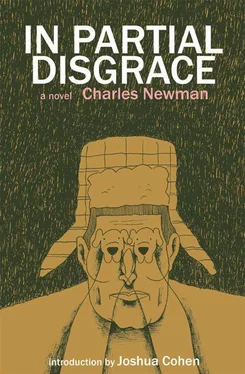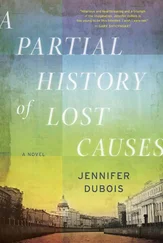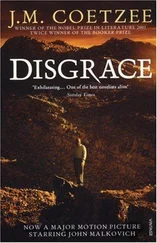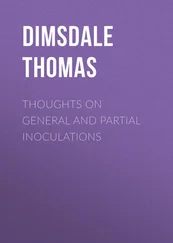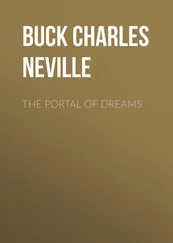“Does it hurt?” Father inquired.
The Professor shook his head defiantly.
“It’s supposed to hurt a little. Observe then, this smallest pressure,” and Father pulled the bit slightly to the right, pulling back the Professor’s lips and exposing the slightly yellowed incisors.
“Very good, Berganza.” Then he pulled on the left rein, and the Professor’s mouth was drawn into a quite uncharacteristic but not unattractive grin. The Professor wrapped the end of the chain’s leash around his own neck, singing, “Let’s go, heigh-ho, mount up, Scipio!” and the Professor obligingly sauntered around the room with Father astride, careful to keep his weight on the balls of his feet, as his yolk-fellow gave him slack. And so they played around with each other as they would permit no other mortal, not even a woman. The library rang with their shouts, and soon damp splotches appeared in the armpits of their suit coats.
“You were born to pull at the traces, Berganza,” Father exclaimed.
“And you, dear Scipio, know just how hard to pull!”
But the Professor was soon winded, and they fell into a heap in the corner howling for joy like animals.
Father was fascinated by leaks. He spent his boyhood building dams of every conceivable material across every creek, rivulet, and runnel, observing how long and in what manner they eroded and unraveled. To him this seemed the basic principle on which nature and science had collaborated: the inevitability of life randomly breaking through its forms. He applied the principle to his breeding, respecting above all the genes which leaked — in error, wisdom, or divine plan was unimportant — while judging the desirability of the mutation, then determining how it might be fixed. The mind was not to be judged on the quality of the ideas it had, but on how it dealt with ideas broken down and dispersed — ideas which broke their own membrane, as it were. In short, where most men would have identified with the dam or the water, having faith in river gods or whoever watches over engineers, my father’s concern was with the banks of the stream. The nature of the problem, as opposed to the essence, could then be put in an entirely different light. If, as was often said in those days, man encounters an abyss, it behooved him to know its depth and general topography, and it should make a difference whether this declivity was chasm or pond, brook or gorge, mudflat or rushing torrent. The river’s origins in his high backyard, or the muddy and boring delta where it slithered into the sea, did not concern him. It was what to do with the damn thing as it crossed one’s property. If one could not ignore the river’s disruptive powers, one could at least manage change at an acceptable rate. In this as in most things, he was ahead of his time, as velocity was to become the primary subject of the century.
I mention this only to explain that Father’s den was largely a collection of leaks and holes, the artifacts of obdurate and inexplicable pressures. He thought of books as dams — marvels of engineering which nevertheless eroded at different rates as they aged. He had a preference not for those which stood the test of time, which he considered simply a matter of luck, but for those which self-destructed before they were finished. For what defined a book was not whether you read or wrote it, but the honest notice that just at the very moment as you were adding the last of its blockages, they were eroding as fast as they were built. In his library the catalogue was predictable: a section of history which expended all its energy in mastering secondary sources so as to never render judgment; philosophy with the glaring contradictions in logic; science based on untestable hypotheses; a series of collected fiction lacking an odd volume, which brought its market value to nil; several roped-off sections of “unreadable masterpieces,” novels written by cowards in heroic tone; poetry whose complete surrender to loftiness finally impoverished it. He specialized in collecting books that neither petered out nor went awry, being fundamentally misconceived from the start. There was also a collection of incunabulae whose value was the precise inverse of their contents, books which appreciated to the exact extent they could no longer be read, or had became too valuable to read. The only complete set in the library was Cardinal de Baussets’s Histoire de Fénelon . His favorite book, he often said, was Volume Four, a tome whose pages had been carefully glued together, forming a solid rectangle which had then been hollowed out so that it could conceal a small dagger and some stamps.
The books were interspersed among jars with imperfect seals in which the fruits had turned as white as crustaceans in formaldehyde, as well as some bottles of wine improperly corked, with an inch of tar residue at the bottom, and some canned goods with wrinkled, misspelled labels imperfectly glued. Other curiosities included architectural drawings of unbuilt follies, failed sluicegates from the lower reaches of the Mze, imaginary tributaries of inaccurate mapmakers, collapsed waterworks, failed bridges, and a large collection of ebonite boxes exhibiting every valve which had failed on the property, every engine part which had given way, pieces of shrubs which had not made it through a severe winter, masonry from cracked foundations, snapped ropes, short-circuited wire, seeds which had not come true, cracked bricks, split joints, busted coils, and broken couplings — all clearly dated and labeled with speculations as to the nature of the stress and fatigue, as well as the consequences.
Of special interest to the Professor was a grid of empty cubbyholes, each with a small gilt frame. Here and there inside was a conventional trilobite, and to its left a cousin stoically bearing scars of some future organism, while to the right, coiled in shame, resided other relations, which had departed history through their imperfections. Unlike the vitrines holding the guns in the dining room, which were on display to show their contents’ beauty, their appreciation in value, and the acumen of the collector, this was a collection of vulnerability, inexplicability, and terror. First was an empty hole signifying the initial colonization never explained, followed by all the smug forms of life incapable of getting where they had been found, the ones who couldn’t swim but crossed the sea, the snails too big to be carried by birds and without the means to cling to driftwood. At the very center was a large hole with a small handkerchief for a curtain, making a kind of funerary to memorialize the gap between reptiles and birds, and containing a long, dry pectoral fin of a flying fish, which, frightened by an oar, had leapt ten feet into the air and dropped into Father’s boat.
“It is a long way from fright to utility, Berganza,” said Father. “And yet”—he beamed as he said this—“the exhibit shows, if not explains, life from the nonliving, does it not?”
The Professor complimented him on the professionalism.
“Yes, yes, you’ve set up the collapse just like Ptolemy, step by step.”
The empty holes were there to be stared into, a diorama dramatizing what happens when you are forced to abandon every theory which explains succession. The entire study was an antidote to the bourgeois dining room, a chamber of imponderables dedicated to the awesome persistence of the unfit. It portrayed not a struggle for life carried on by the best-adapted individuals, but laws of which we are totally ignorant, forms endowed with a novel character either annihilated or reverted to a standard of mediocrity, and organisms which, in the face of all good things, nevertheless moved toward destruction. The display was devoted to the theory of natural selection in order to show how it shrugged off the problem of evil, and how an enfeebled constitution might be passed on. Of our species, the only motive and characteristic seemed to be persistent exaggeration, like orchids or butterflies, whose enhanced singularity is simply incomprehensible.
Читать дальше
